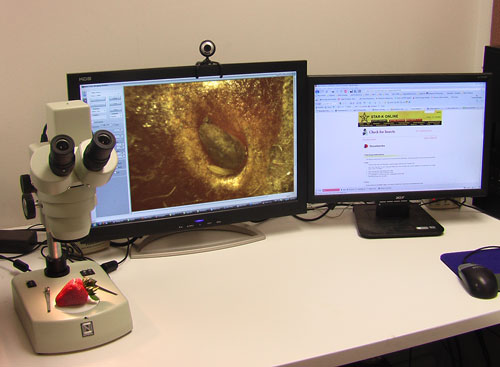
As we sit down to enjoy a crisp, green salad or prepare to garnish a dish with a fresh sprig of parsley, probably the last thing on our minds at that time is insects. But insects should actually be foremost on our minds, as the act of eating insects, as we shall explain here, violates a very serious set of prohibitions. Let’s start from the beginning.
The Torah expressly forbids Jews from eating insects (tolayim). In Leviticus 11:41, we are told, “And every swarming thing that swarms upon the earth is a detestable thing; it shall not be eaten.” Any food known to be subject to insect infestation, therefore, cannot be eaten until the insects have been removed.
But what if you’re not sure? What is the status of a food item that is only suspected of containing an insect? Are you obligated to check the item to determine the presence of an insect, or can you assume there is no infestation?
This would depend on the likelihood of there being an insect on that particular variety of food. From a Torah standpoint, there are two possibilities: If the likelihood of a particular food containing an insect is over 50%, the Torah mandates checking and you may not consume the food before inspection. If the likelihood falls below 50%, then there is no Torah obligation to check.
In this latter case, however, although there is no Torah obligation to check for insect presence, there is still a Rabbinic obligation* to do so, even if only a ‘sizable minority’ of that type of food might be infested. What is a ‘sizable minority’? It is generally defined as greater than 10%. So if the likelihood of insect presence is between 10-50%, there is still a Rabbinic obligation to inspect the food prior to consuming it. If the likelihood is less than 10%, there is no need to check at all.
Let’s sum things up. In general, there are four insect policy categories we may assign to a particular food:
- Permitted without washing or checking
- Permitted only after peeling and/or washing
- Permitted only after checking
- Not recommended due to the difficulties inherent in checking properly
And there are three main criteria to determine which insect policy to apply to a food item. You must note the following:
- Prevalence of infestation – i.e., is it >50%, 10-50%, or <50% (as explained above)
- Type and size of insect prevalent in that item
- Infestation sites and the processes necessary to check those areas and remove any insects
It is important to familiarize yourself with the appearance of the common insects that can infest various foods, especially aphids, thrips, flies and other common foodborne insects, before attempting to inspect those foods.
For more information about the specifics of checking for insects and for images of the most common types of insects that you would most likely encounter, please click HERE.
* A stringency the rabbis of the Talmud added to safeguard the precepts of the Torah.

 STAR-D
STAR-D STAR-S
STAR-S